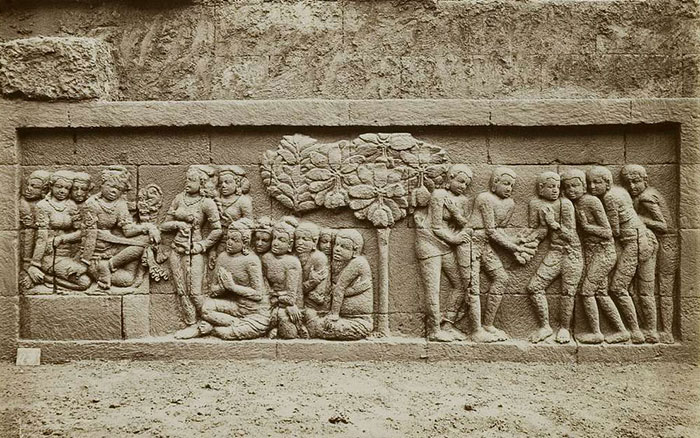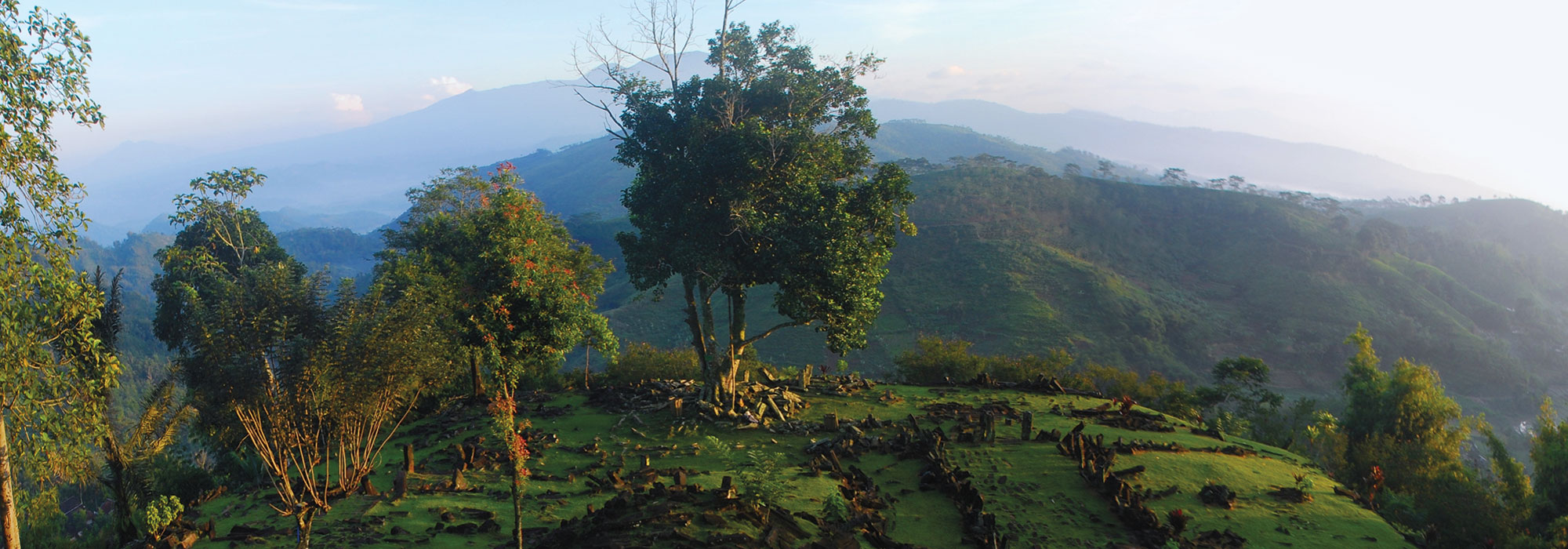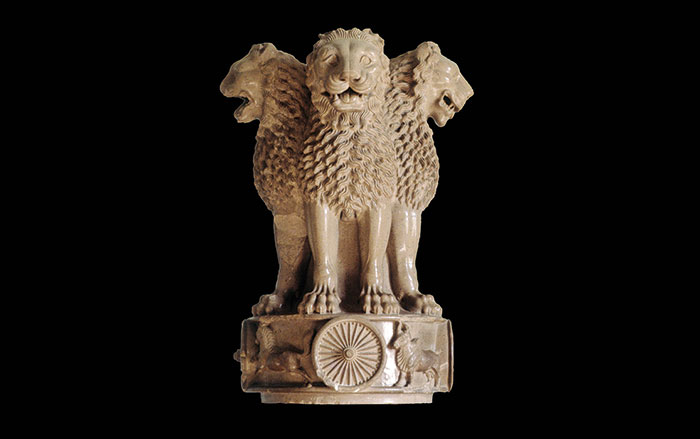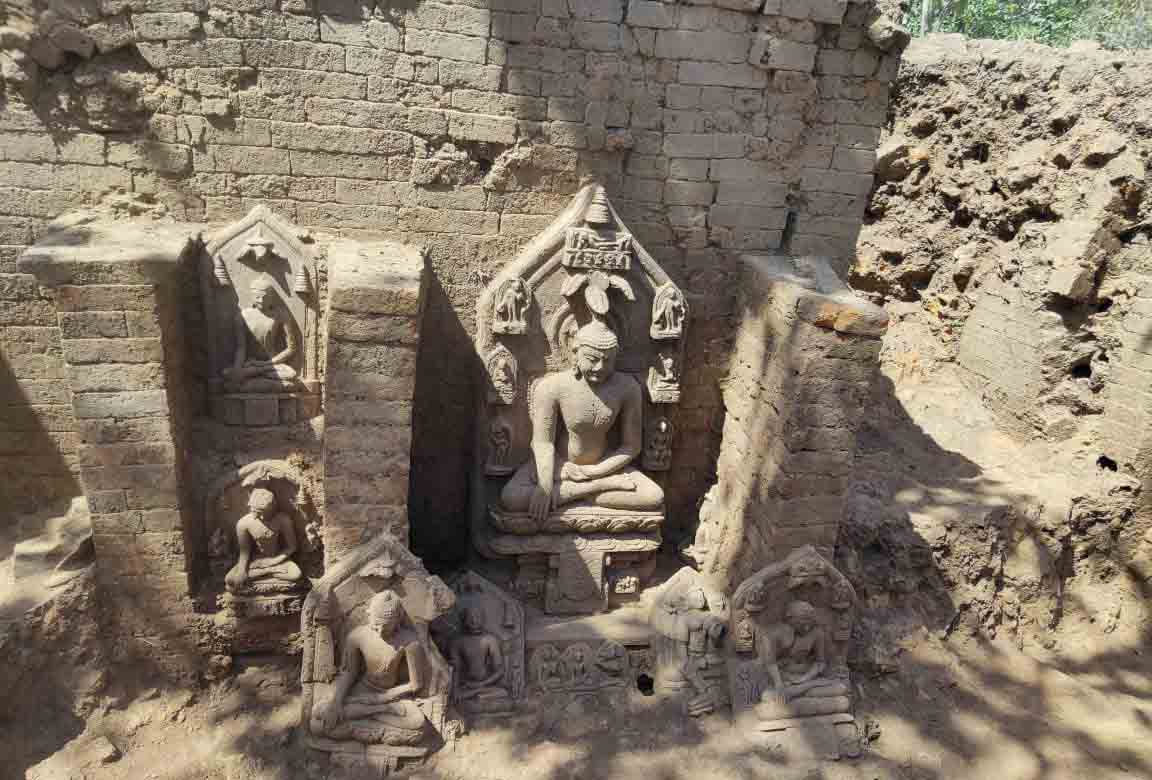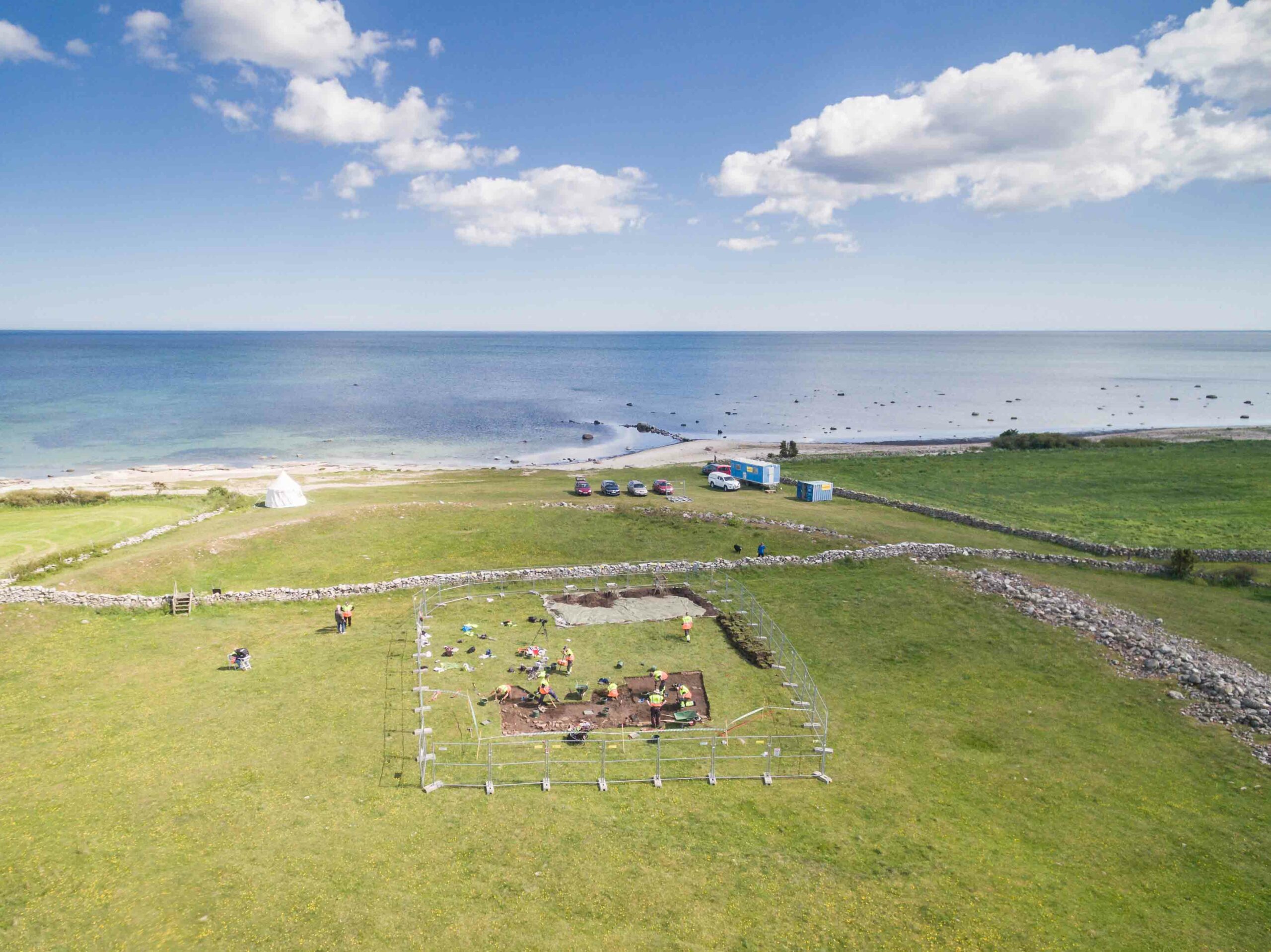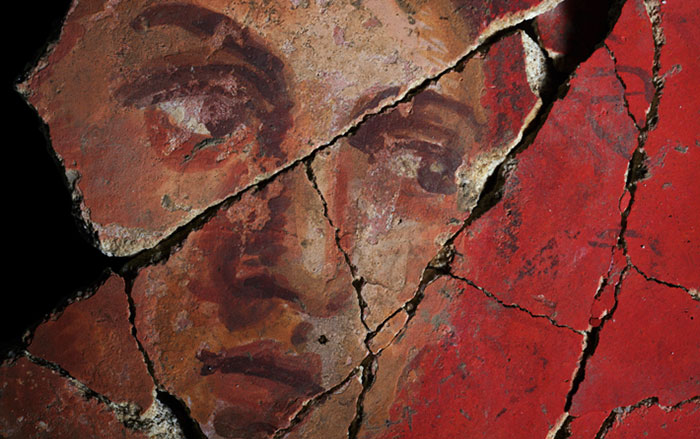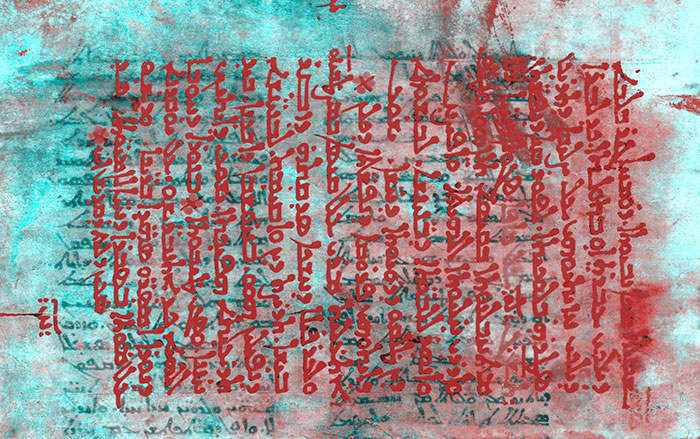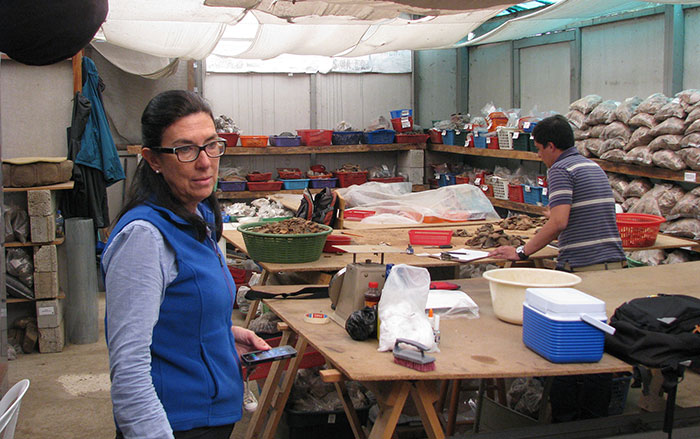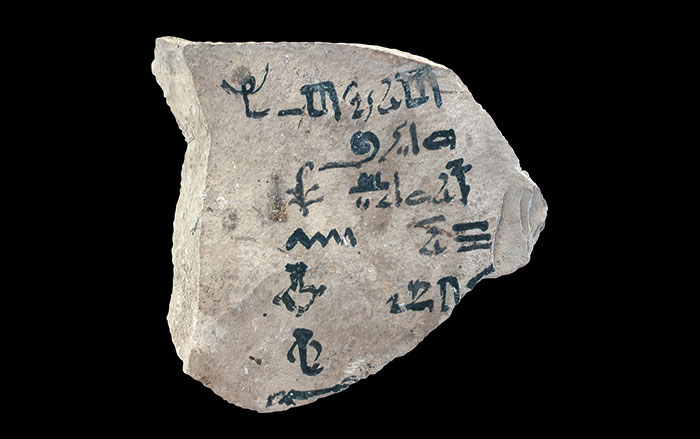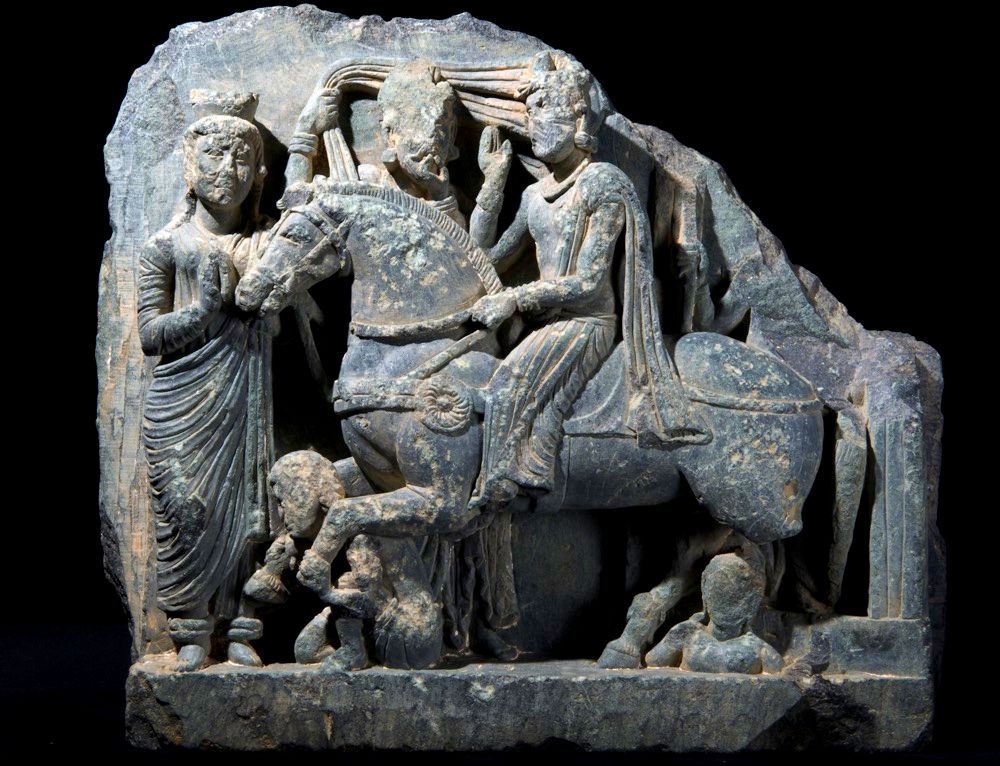
SWAT VALLEY, PAKISTAN—Buddhist sculptures and carvings have been discovered in a shrine in the ancient city of Bazira, founded in the second century B.C. and damaged by earthquakes in the third century A.D. According to a report in Live Science, one of the 1,700-year-old sculptures is thought to depict the wealthy prince Siddhartha traveling on a horse named Kanthaka. Archaeologist Luca Olivieri thinks that the carving may illustrate the story of Siddhartha, who eventually became the Gautama Buddha, leaving his home to seek enlightenment. Another carving features a stupa with a platform, or harmika, near its top. Next to the stupa are two columns topped with lions. Olivieri said this sculpture may represent an actual stupa in the Swat Valley. A carving found in the shrine’s courtyard is thought to date to the post-earthquake period. It pictures an unknown male deity sitting on a throne while holding a wine goblet and a severed goat’s head. “The goat is an animal associated to the mountains in the cultures of Hindu Kush, the local region,” Olivieri said. To read more about the archaeology of Siddhartha Guatama, go to "Buddhism, in the Beginning."


